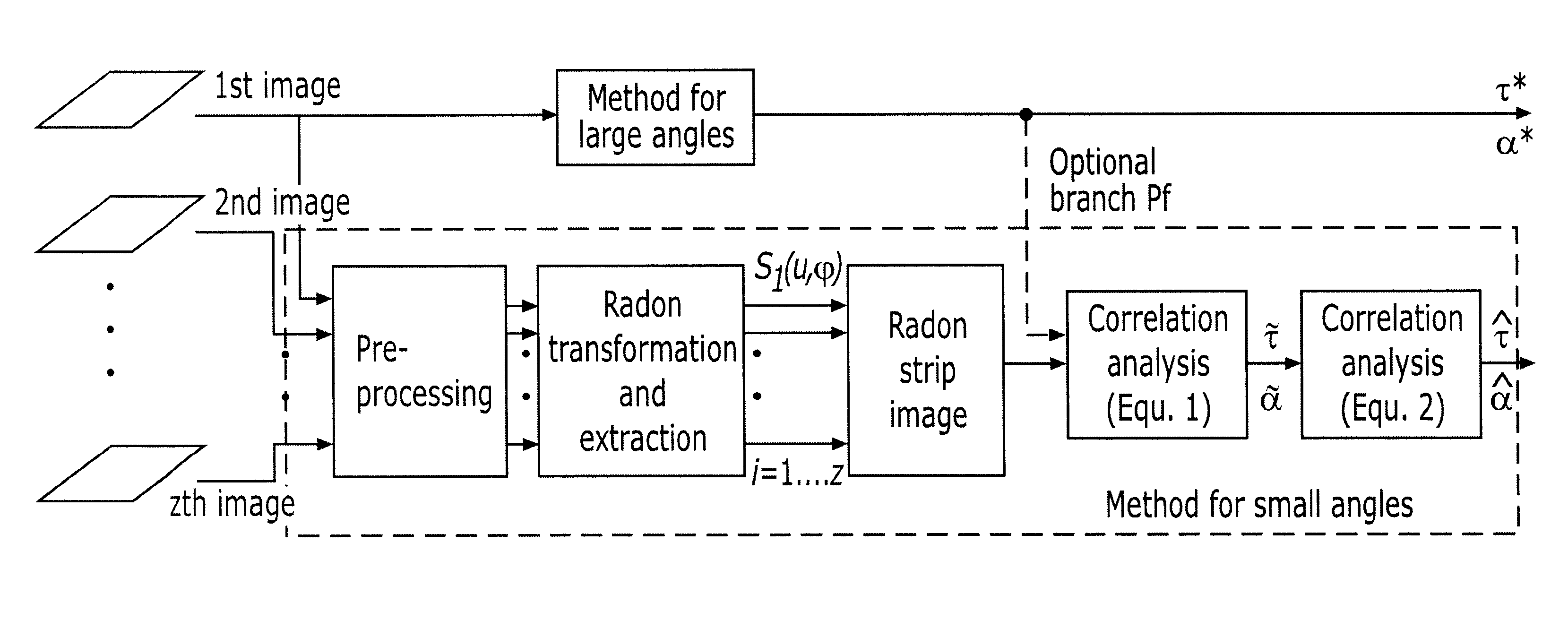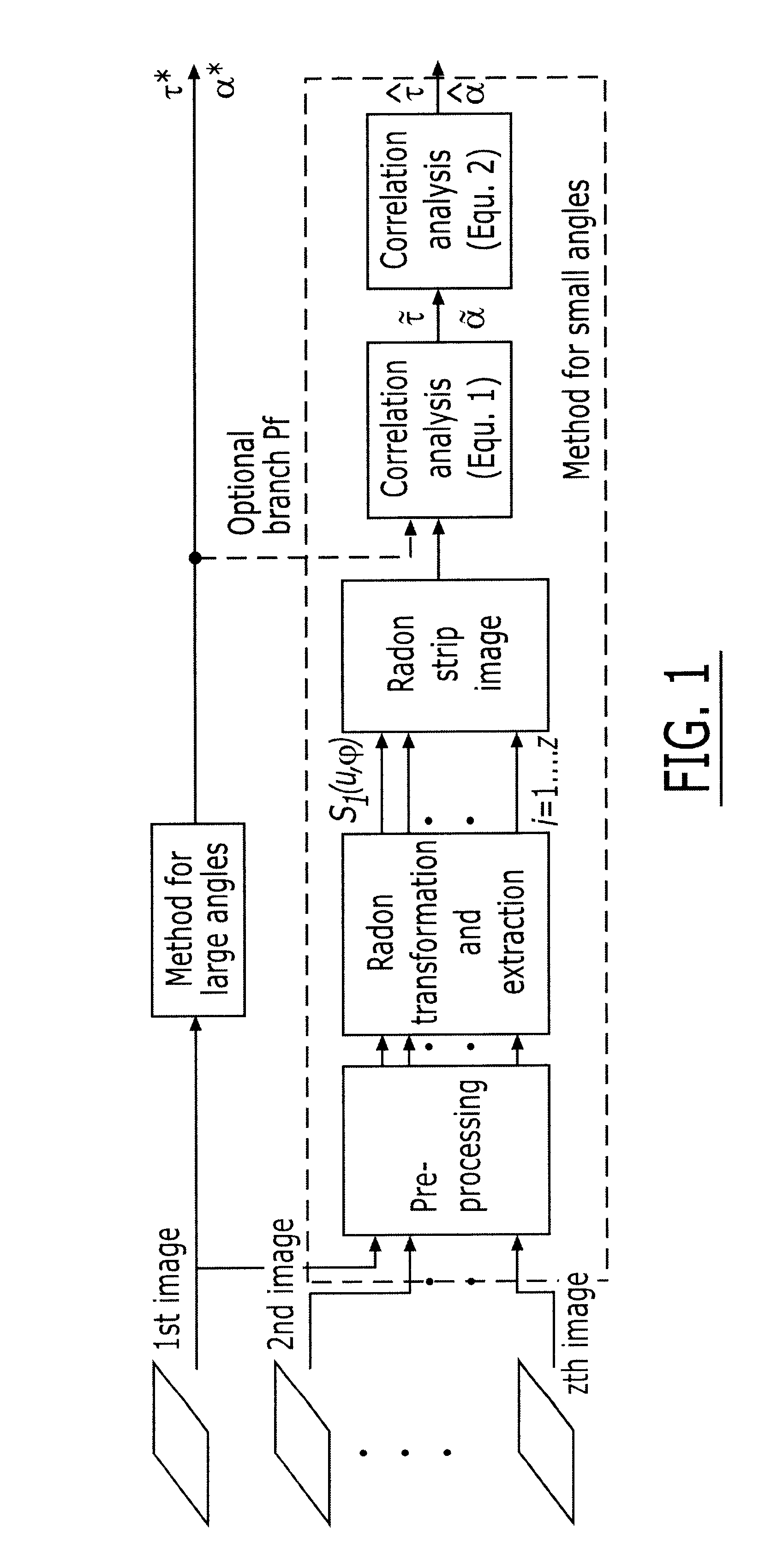Method and device for determining an angled structure in the surface of a precision machined cylindrical work piece
a technology of precision machined cylindrical workpieces and angled structures, which is applied in the direction of instruments, nuclear engineering, television systems, etc., can solve the problems of inability to quantitatively describe the structure of helical grooves, method provided only very unreliable information, and premature wear of seals, etc., to achieve simple handling of devices, speed of methods, and cost-effective implementation
- Summary
- Abstract
- Description
- Claims
- Application Information
AI Technical Summary
Benefits of technology
Problems solved by technology
Method used
Image
Examples
Embodiment Construction
FIG. 1 shows a schematic illustration of the sequence of the method according to the present invention for estimating the helix angle. Enlarged grey-scale images of the grinding texture of a shaft mounted in a horizontally rotatable fashion are recorded via a macrolens and a CCD camera. Large helix angles a in the range of degrees can be estimated from a single image of the surface by adjusting the camera and the workpiece at a defined angle g relative to one another and determining the angular position of the flutes in the image by means of a Radon transform of the image. The difference between the defined and measured angles is the elix angle.
The Radon transformation R is a method which effectively visualizes linear structures in images: R{g(x→)}=g⋓(u,φ)=∫∫Bildg(x→)δ(x→Te→φ-u)ⅆx→=∫∫Bildg(x→)δ(x cos φ+y sin φ-u)ⅆxⅆy
The value of the Radon transform R for a fixed j and a fixed u is, as shown in FIG. 2, equal to the sum of grey-scale values along a straight line...
PUM
 Login to View More
Login to View More Abstract
Description
Claims
Application Information
 Login to View More
Login to View More - R&D
- Intellectual Property
- Life Sciences
- Materials
- Tech Scout
- Unparalleled Data Quality
- Higher Quality Content
- 60% Fewer Hallucinations
Browse by: Latest US Patents, China's latest patents, Technical Efficacy Thesaurus, Application Domain, Technology Topic, Popular Technical Reports.
© 2025 PatSnap. All rights reserved.Legal|Privacy policy|Modern Slavery Act Transparency Statement|Sitemap|About US| Contact US: help@patsnap.com



